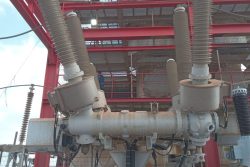Health authorities in Aishalton and Parabara, in the South Rupununi, are monitoring an increase in malaria cases that have been imported into the communities from workers mining in the Marudi Mountain area.
From December 2020 to near the end of March 2021, health officers in the communities recorded over 150 cases, with a decline being seen over the past month.
Devin Sanasie, Medic at Aishalton recently told Stabroek News that the community started to record a spike in cases in December.
He said there was a minor outbreak in the community at that time but the authorities were able to contain it. “These were all imported cases from Marudi mountains, mostly foreign nationals. But we have been monitoring it and the cases are declining now. In January we 54 and February we had 26… Overall, over a 100 cases were detected,” Sanasie explained.
According to him, when the outbreak was reported they immediately sprang into action and to educate persons.
He noted that from the Vector Control Department, they were able to test a large group of persons and distribute insecticide-treated nets.
A clean-up campaign in the community was also conducted.
Meanwhile, Parabara Health Worker Ezbon Jerome told this newspaper that over 50 persons were referred for swabbing after seeking initial treatment at the community health post.
“All of the cases we had came from the Marudi mining area. The cases are coming from across the border and they are working in the mining area. So when they experience symptoms and are infected, they seek treatment here ’cause we are close to Marudi Mountain,” he said.
Jerome pointed out that while it is a small number of persons who are seeking treatment, it is a burden on the community health post, which does not have enough medication to treat both locals and outsiders.
With limited medication available, he explained, most infected persons have to visit the medical facility at Aishalton for treatment.
According to Sanasie, while the influx of cases had initially taken a toll on the health system, they have put systems in place to address the issue.
Stabroek News was told that a health screening post was erected at Marudi to offer testing and treatment options to persons experiencing symptoms of malaria.
During the period of 2014 to 2016, former Minister of Health Volda Lawrence had announced that Guyana has seen a steady decrease in malaria cases in the hinterland region.
Guyana’s action to distribute long lasting insecticide nets to the vulnerable populations has been deemed one of the most successful strategies implemented to combat the malaria epidemic.
According to the World Health Organization (WHO), malaria is an acute febrile illness. Symptoms of the disease usually appear 10 to 15 days after the infective mosquito bite. The first symptoms – fever, headache, and chills – may be mild and difficult to recognise as malaria. If not treated within 24 hours, malaria can progress to severe illness, often leading to death.
The illness is caused by Plasmodium parasites, which are spread to people through the bites of infected female Anopheles mosquitoes, called “malaria vectors.” There are 5 parasite species that cause malaria in humans, and 2 of these species – P. falciparum and P. vivax – pose the greatest threat, the WHO says.






